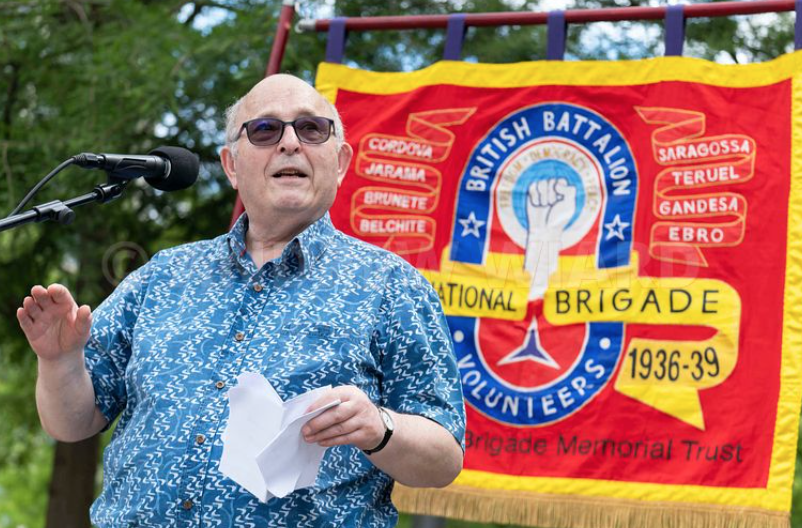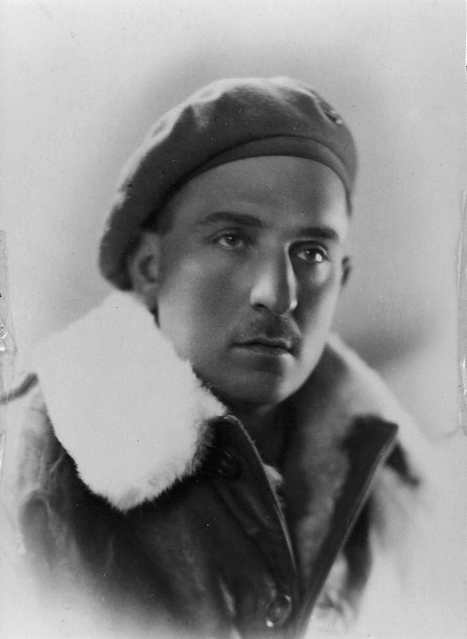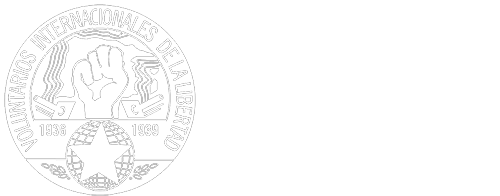International Brigade Memorial Trust
This is an edited version of the talk delivered by Peter Crome at the annual commemoration of the British volunteers who fought in the International Brigades in the Spanish Civil War held on the South Bank on 1 July 2023.
I have been asked to say a few words about the medical services at the Battle of the Ebro, the last major battle in which the British Battalion of the International Brigades participated. Although my children believe I am very old I was not so old to have been at the Ebro. Luckily many of those who were there have written accounts of the medical services and there are also several excellent accounts written by distinguished historians. A disclaimer – all errors in what I have to say are theirs and not mine!
The outbreak of the Spanish Civil War was a pivotal moment not only in Spain but throughout the world. This statue commemorates all those who went to Spain from Britain to support the Spanish Republic, amongst whom were a substantial number who went to provide medical, nursing and other humanitarian services.
Local fundraising for food and medical supplies took place throughout the UK.
Organisations such as the Spanish Medical Aid Committee were established soon after the outbreak of the war and their first team left for Spain in August 1936 and established a hospital. From Scotland, the first Scottish Ambulance Unit went out in September 1936. Medical teams came from all over the world including large contingents from the US. In the spring of 1937 most the different national teams had been incorporated into the International Brigades, with doctors and nurses from different countries working together and in partnership with Spanish doctors and nurses.
Those who went to provide medical aid as non-combatants, just like those who went to fight, came from all sectors of UK society and included, not just nurses and doctors but also ambulance staff, drivers, and mechanics and administrators. I must mention Nan Green, the administrator who worked with my father and who ran the International Brigade Association for many years.
Not all of those in medical services were ‘lefties’. They held different political and religious views and many went for humanitarian reason. An example was the Quaker Nathan Clark, of the Clark shoe factory who is credited with designing the desert boot. Many wrote memoirs of their experiences and oral and documentary testimony has resulted in numerous books and articles. I had the privilege of meeting many of the volunteers and a number became long-lasting family friends. These included Janette Opman from France, František Kriegel from Czechoslovakia and Carl Coutelle from the GDR. The British volunteer Alex Tudor Hart was the family GP for a while.
I would like to mention the names of two doctors who have special relevance to where we are on the South Bank and almost opposite the Houses of Parliament. Larry Collier, then a medical student, who later became Lord Monkswell but gave up his peerage without taking his seat in the House of Lords. One of the most surreal experiences I had was when I went with him and his family to the ancient ceremony of disclaiming a peerage in the rather grand office of the Clerk of the Crown in Chancery. Sadly we lost a voice in the House of Lords. There was also Chris Thornycroft, who provided engineering services to the medical units and who was a descendent of the Thornycrofts who sculpted the statues of Boudica and of Oliver Cromwell just over the river.

Peter Crome speaking at London's Jubilee Gardens on 1 July. Photo: Andrew Wiard.
Many of those from the UK serving in the medical services were students or, if qualified, were very junior and even fewer had undertaken military service. I don’t know if any spoke Spanish! My father Len Crome had only been qualified for three years when he arrived in Spain and later became head of medical services of the XVth Army Corps that fought at the northern end of the Ebro Battle. He attributed his promotion not to his skills as a doctor but to the fact that he spoke several languages and could communicate with the generals.
The doctors and other health workers had to learn quickly, and indeed they did so.
By the time of the Battle of Ebro in 1938 the medical services were better prepared and the medical advances were some of which now seem obvious.
Wound care: The traditional way of dealing with wounds was to stitch them up. This had the great effect of promoting gas gangrene, amputations and death. The Spanish method, associated with the name Trueta (who later moved to the UK and became a Professor in Oxford) was to lay the wound open, wash it, remove all dead tissue and contaminating material – if necessary on more than one occasion, apply antiseptic, leave open and immobilise. The techniques that had to be learned again in the Second World War, to leave the wounds to heal from the bottom up.

Len Crome.
Blood transfusions: Blood banks were established before engagements. Blood was collected from the civilian population, who received food vouchers in exchange for their donation. Norman Bethune from Canada was associated with the development of blood banks and from the UK there was Reggie Saxton, a stalwart supporter of progressive causes until his death in 2004.
Stretchers: These were standardised. They were designed so that they were raised from the ground so wounds would not get contaminated and could slot into lorries and trains for transportation. They were light and could fold so that they could be carried by one person and had a raised head so that, when not used for a patient, staff could sleep on them.
Lorries: These were converted into auto-chirs containing operating tables, autoclaves, fridges for storing blood and their own generators for providing light. Often there would be two operations going on at the same time, with a single anaesthetist going between the two patients.
The key to the management of battle injuries was the physical organisation of the evacuation of the injured.
First-aid posts were established 300-700m behind the front line. Morphine and vaccinations were given. Dressings and tourniquets were applied. Then the injured were taken by ambulance or mule to a classification point. There, a doctor would practice triage and people were sent to first-line or second-line hospitals depending on the severity of the wound. It was at these hospitals that major surgery was undertaken. Further back were base hospitals.
The hospitals were located in any suitable place that had not been bombed. These included quarries, caves and tunnels. The front at the Battle of the Ebro was not static. It went forwards and backwards and the hospitals had to move. Sometimes the front line services were behind the second line services! The hospitals also had to cope with ‘ordinary’ diseases such as tuberculosis and typhoid, which were common at that time in Spain
The most iconic and best-described medical facility was the Santa Lucía cave hospital established in the village of La Bisbal de Falset. I had the privilege of visiting the cave and unveiling a commemorative plaque. There are several published descriptions of its operation. You will be able to see videos of it on Youtube. If you visit you will see boards which tell the story of the hospital. It had between 80 and 100 low camp beds for the patients, who included British, Spanish and other International Brigaders as well as prisoners of war.

Reggie Saxton giving a blood transfusion.
Wounded soldiers were triaged, with the less serious being sent further away. Len had been reprimanded by General Walter for suggesting this approach previously. Patience Darton writes about struggles trying to retrieve blankets from the dead so that she could use them for living. There was a blood transfusion laboratory housed in a lorry, with the transfusions supervised by Reggie Saxton.
Lessons were learned in Spain and lessons on how best to manage battle injuries were lost and had to be relearned in the Second World War. Many, if not all of the doctors who went to Spain, later served in the Royal Army Medical Corps and had to reintroduce the techniques that they adopted in Spain.
To conclude, here’s something that Len told me. Of course he was proud to have served in Spain and proud to have been part of the international effort to fight fascism. However, he said the people who deserved the most praised were the ordinary people of Spain, particularly the women and children, who suffered so much during and after the war.
Professor Peter Crome is the son of Len Crome and a Patron of the IBMT.
